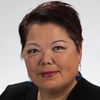Sometimes in the march to progress and inclusivity, we find ourselves taking a path that leads us in the opposite direction than what we intended.
Such is the case with the term “Asian Pacific Islander” or API, a now commonly used way to describe people of Asian American and Pacific Islander descent in the United States. An even more shorthanded version is Asian Pacific American, or APA.
There are now API and APA organizations, scholarships, grants, academic disciplines, a national Asian Pacific American Heritage Month and in Washington state, a Commission on Asian Pacific American Affairs (CAPAA).
The original term, Asian American, came out of the pan-Asian student movement of the late 1960s, as part of an effort to unify what had been disparate Asian American groups into an umbrella that acknowledged a shared history, identity and reject the antiquated and geographically subjective term “Oriental.”
By the 1980s, the U.S. Census expanded the definition, presumably to be more inclusive, grouping Asian Americans and Pacific Islanders together into the category of Asian Pacific Islander. By 1997, the federal Office of Management and Budget (OMB) changed back to allow different categories for “Asian” and “Native Hawaiian and other Pacific Islander,” but the umbrella API and APA terms have stuck.
Now, some Pacific Islander, also known as Pasifika, community leaders say it’s time to disaggregate Pacific Islander from Asian Americans and take the “P” back to speak truth to the reality of the Pacific Islander experience.
Pacific Islander or Pasifika people are those originating or living in Micronesia, Melanesia and Polynesia. Pacific Islander communities face significant health and socio-economic disparities compared to other groups. In most measures, such as poverty rates and health outcomes, Native Hawaiian and Pacific Islander (NHPI) people fall behind white Americans as well as behind Asian Americans. Nowhere are those disparities more evident than with COVID-19.
In Washington, the state with the third highest number of NHPI in the country, Native Hawaiians and Pacific Islanders have a seven times higher rate of COVID-19 cases than white and Asian American people.
Joseph Seia, the founder and executive director of the Pacific Islander Community Association (PICA) of Washington, said merging Asian American and NHPI together makes the specific needs of NHPI people invisible.
Seia said the experience of NHPI people is actually much more akin to the experience of urban Native American people, as the majority of NHPI are also indigenous to their original lands and suffered displacement, dislocation and subjugation due to colonization – including colonization and oppression by Asian countries.
Nuclear weapons testing on Pacific islands like the Marshall Islands, for example, left residents with radiation sickness and a multitude of cancers. And in Samoa, a rapid shift from a traditional diet and lifestyle brought on by colonization created an astronomical rise in diabetes beginning after World War II, with nearly a third of the population now having the disease. The experience of NHPI is also similar to Native Americans in that small numbers (under 1% NHPI in Washington, for example) makes it easier for NHPI to be overlooked.
“I think we just have to stop using the racist term [Asian American Pacific Islander]. I think we have to just bury that term. For a lot of Asian organizations, drop the ‘P,’” Seia said.
Unless the organization is actually centering the work, needs and leadership of NHPI people, they should make way for NHPI-led organizations that are. To not do so, Seia said, leaves NHPI people without advocates at policy tables where critical decisions are being made that impact the health of their communities.
Dakota Camacho is a Seattle-based Chamorro artist whose family is from Guahan, also known as Guam. Camacho said that not only does lumping Asian Americans and NHPI together not make any political sense, but the erasure of NHPI does a disservice in other ways as well.
“It also means that we get left out. That is a problem because we matter and because we have ancestral intelligence and knowledge and language and culture that is beautiful. We have so much to offer to the world that can enrich people’s lives,” Camacho said.
Retaining a sense of cultural pride and self determination in the face of colonization is a victory in itself.
“To live through a moment where your grandparents were made to believe their whole life by different foreign occupations that our people are dumb, that our cultures are useless, that our language has no value,” Camacho said, “you begin to internalize that those things are true about you.”
It’s part of Camacho’s mission to use Pasifika art and culture to resist that mental colonization.
“Our indigenous knowledge is essential to the survival of all of us,” Camacho said. “Indigenous culture is really just a set of practices, beliefs, and values that our ancestors have honed over time to orient us towards having a healthy and holistic relationship to the environment, to ourselves, to our community and to all life on this planet, the seen and the unseen, the big spirits in the mountains, the elements.”
Camacho has a simple remedy for the disaggregation problem. “Just be Asian,” Camacho said. “[If you focus on Asian Americans], just be Asian.” Don’t claim to represent NHPI communities if it is not actually authentic to the work you do or the communities you center. Then, support NHPI-led organizations and efforts and ensure they have their own, independent seat at the table.
Making that change will help us all get back on a more inclusive path.
